This is one in a series of posts on the Nikon Z6 and Z7. You should be able to find all the posts about that camera in the Category List on the right sidebar, below the Articles widget. There’s a drop-down menu there that you can use to get to all the posts in this series; just look for “Nikon Z6/7”.
There has recently been some controversy about the relative noise behavior of the Nikon Z6 and Z7 in deep shadows. I am in the process of addressing those differences in a series of posts which will include both quantitative results and visual ones. The series starts here.
I’ve been working on automatically graphing Z6 and Z7 shadow normalized signal-to-noise ratios (SNRs) for various ISO settings. I’m going to post them here, since, as I get further along in this analysis. we’ll want to refer to them.
The Claff SNR that is used to measure his photographic dynamic range (PDR) is marked with a horizontal line that intercepts the y-axis at 3.3.
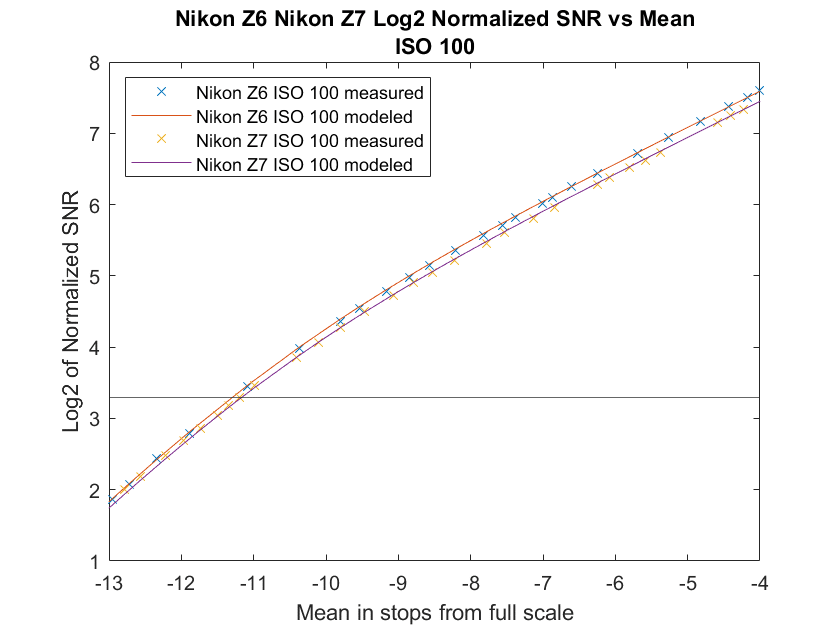
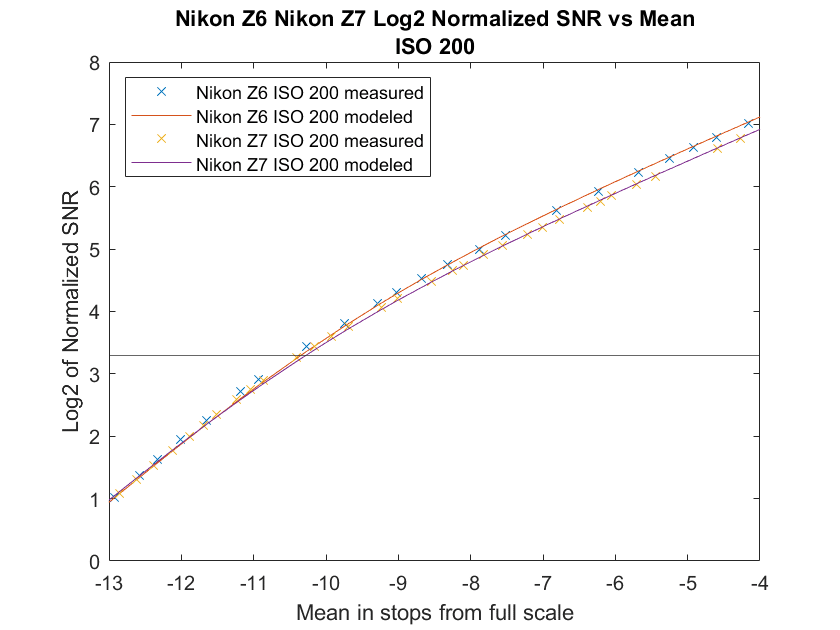
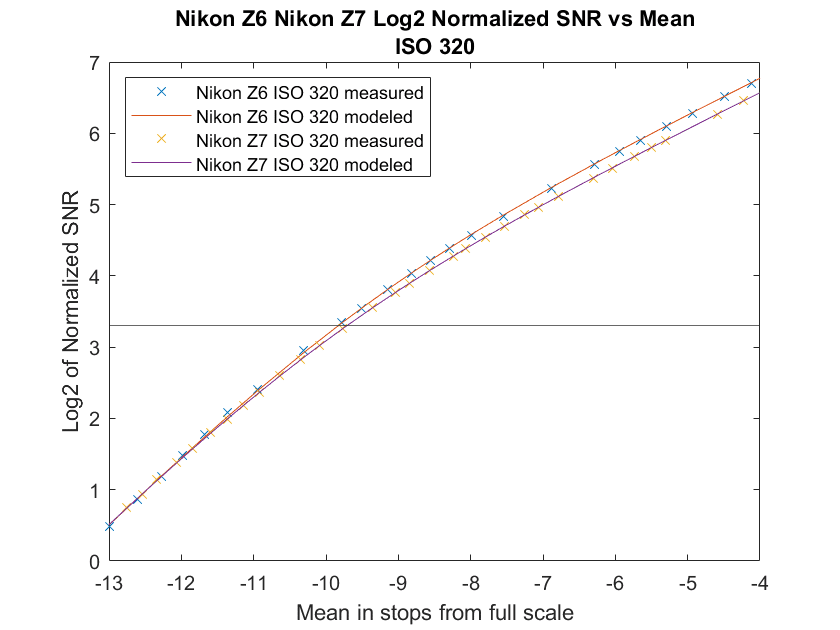
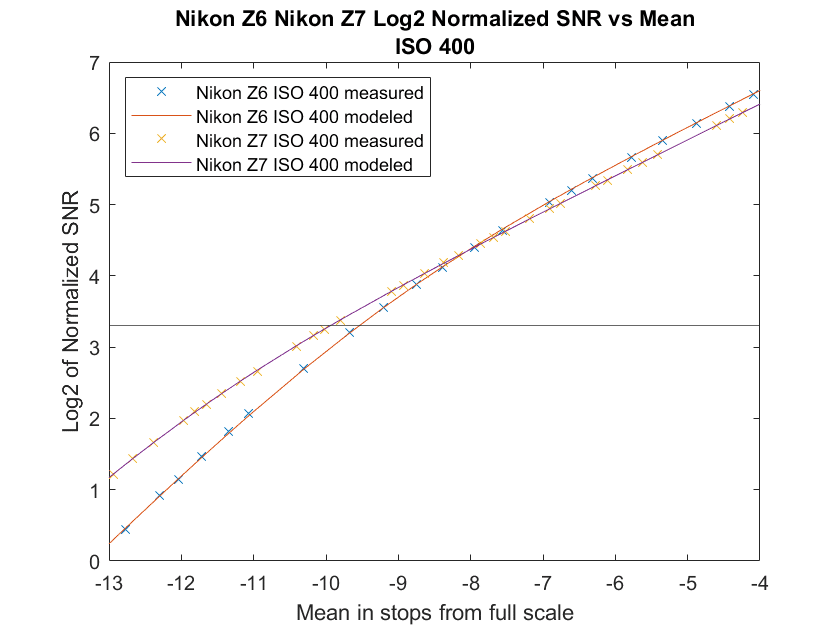
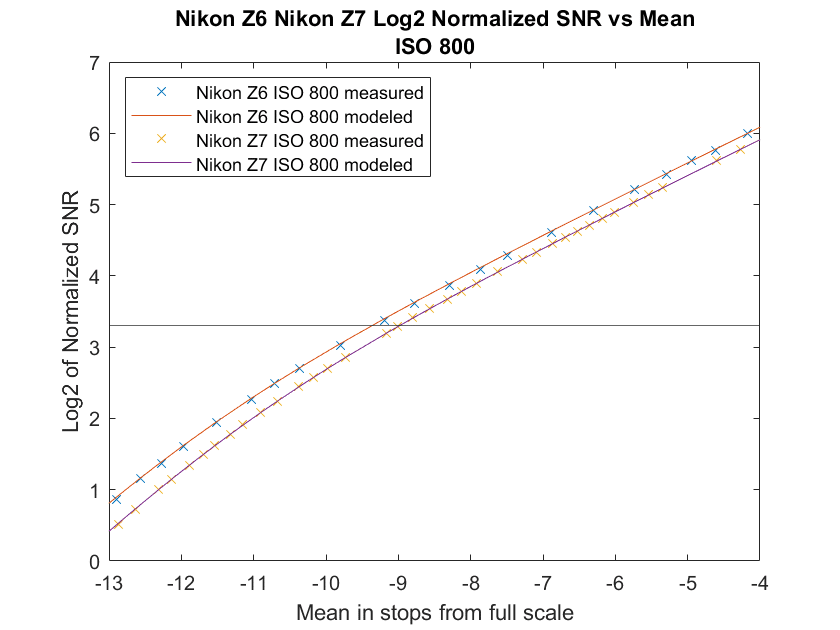
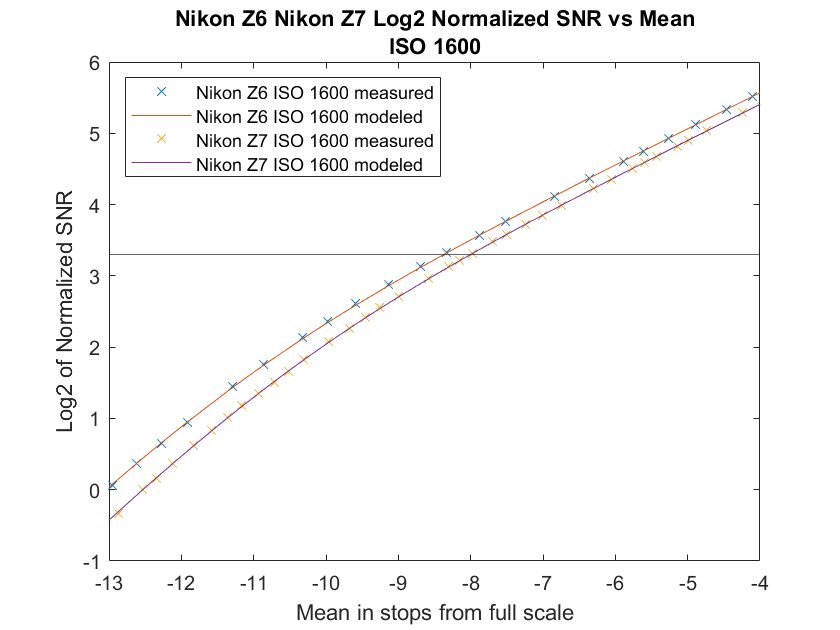
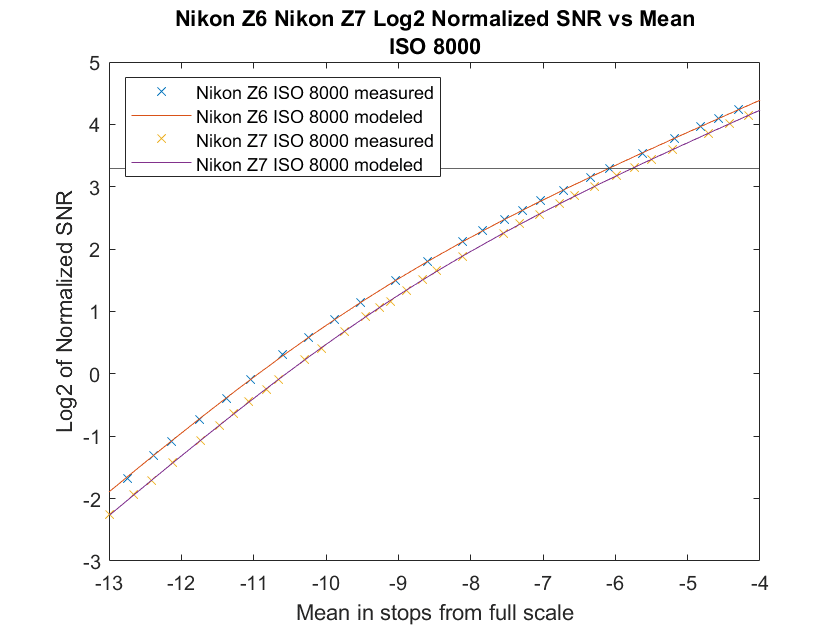
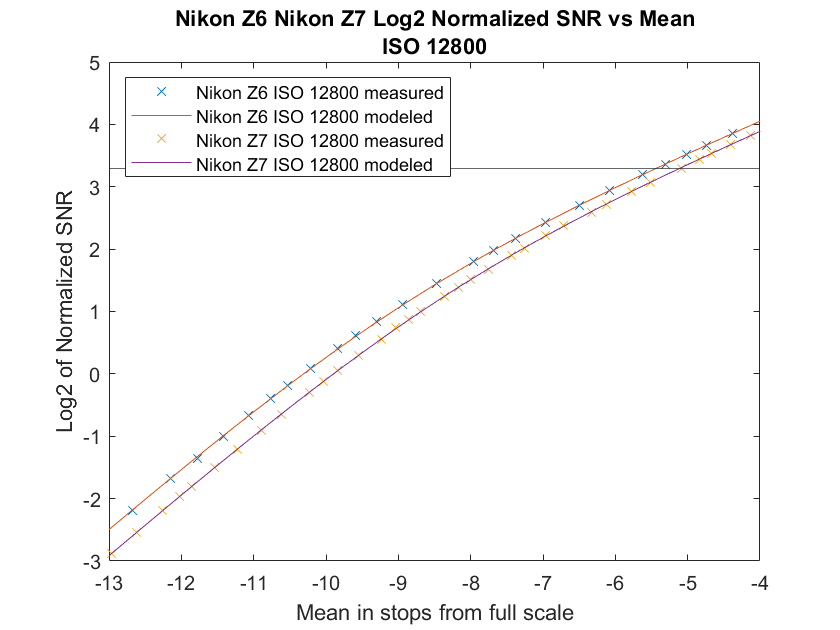
Leave a Reply